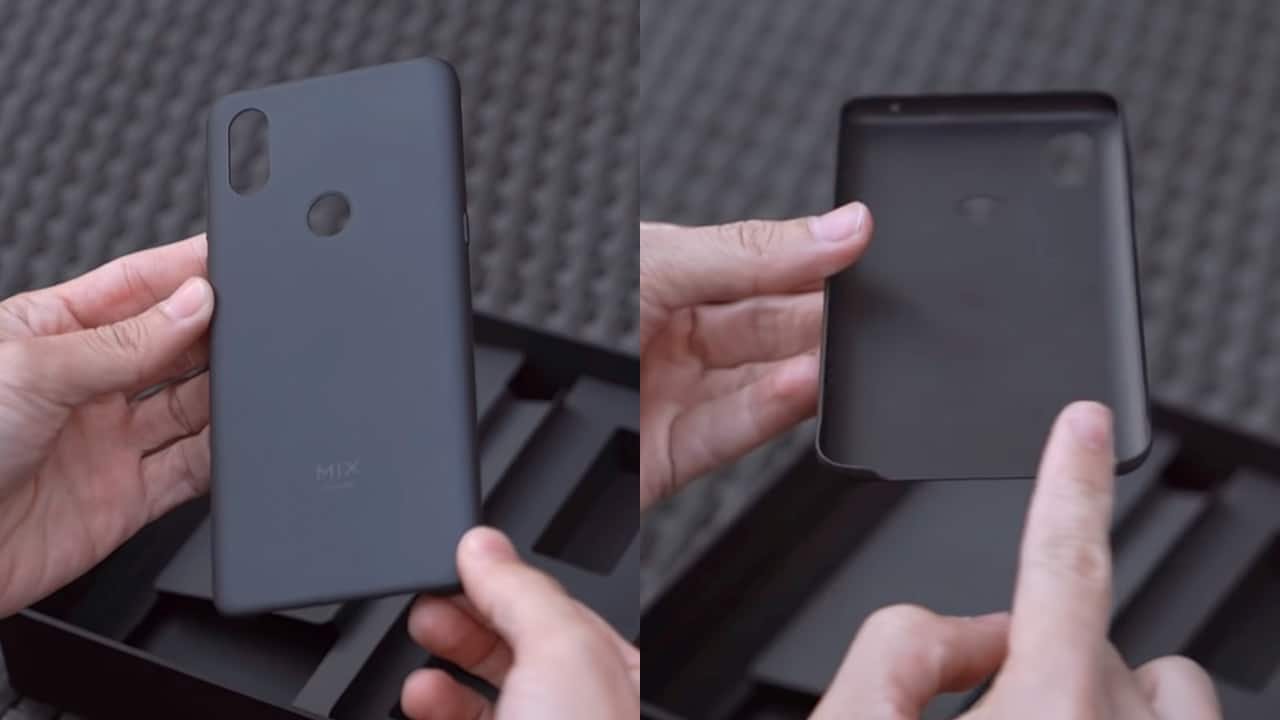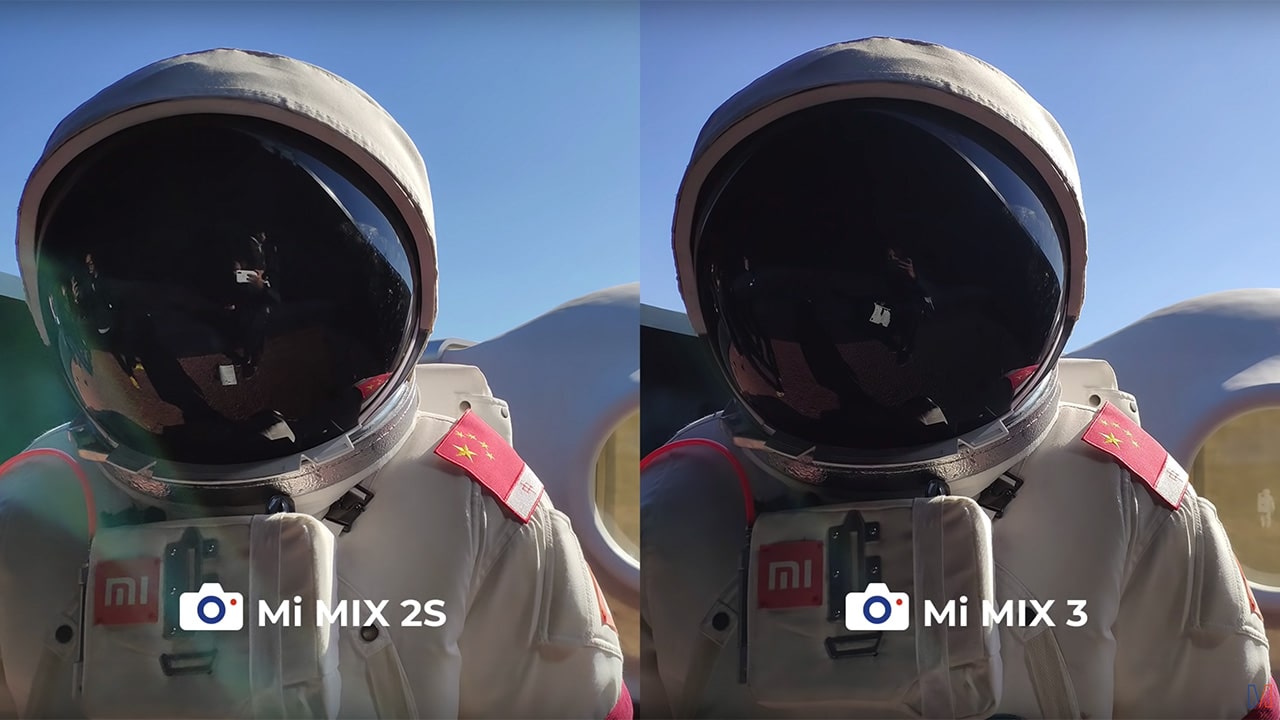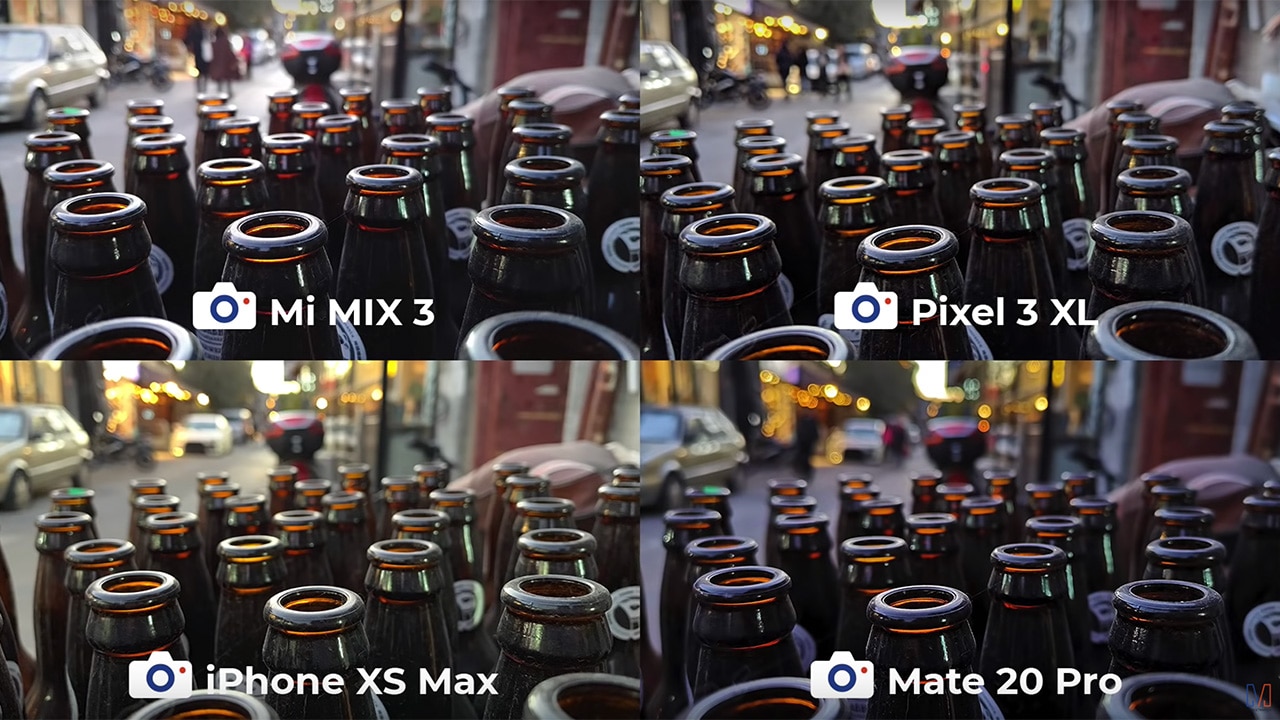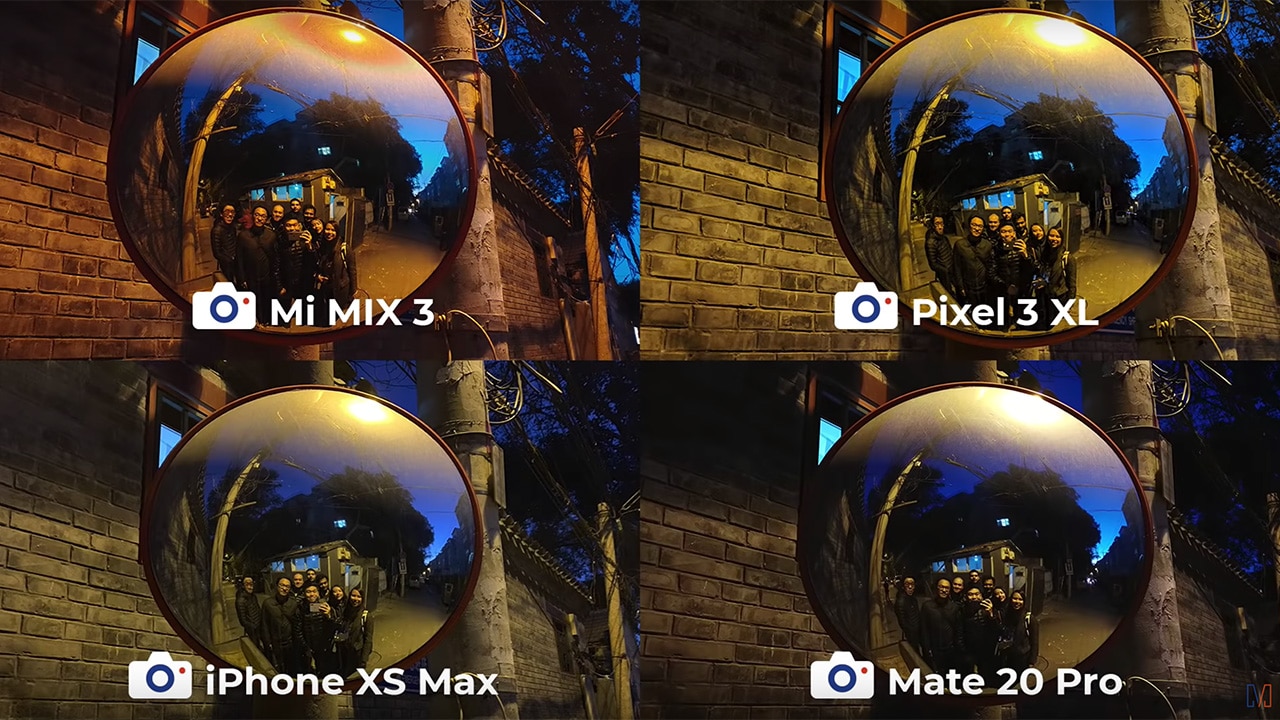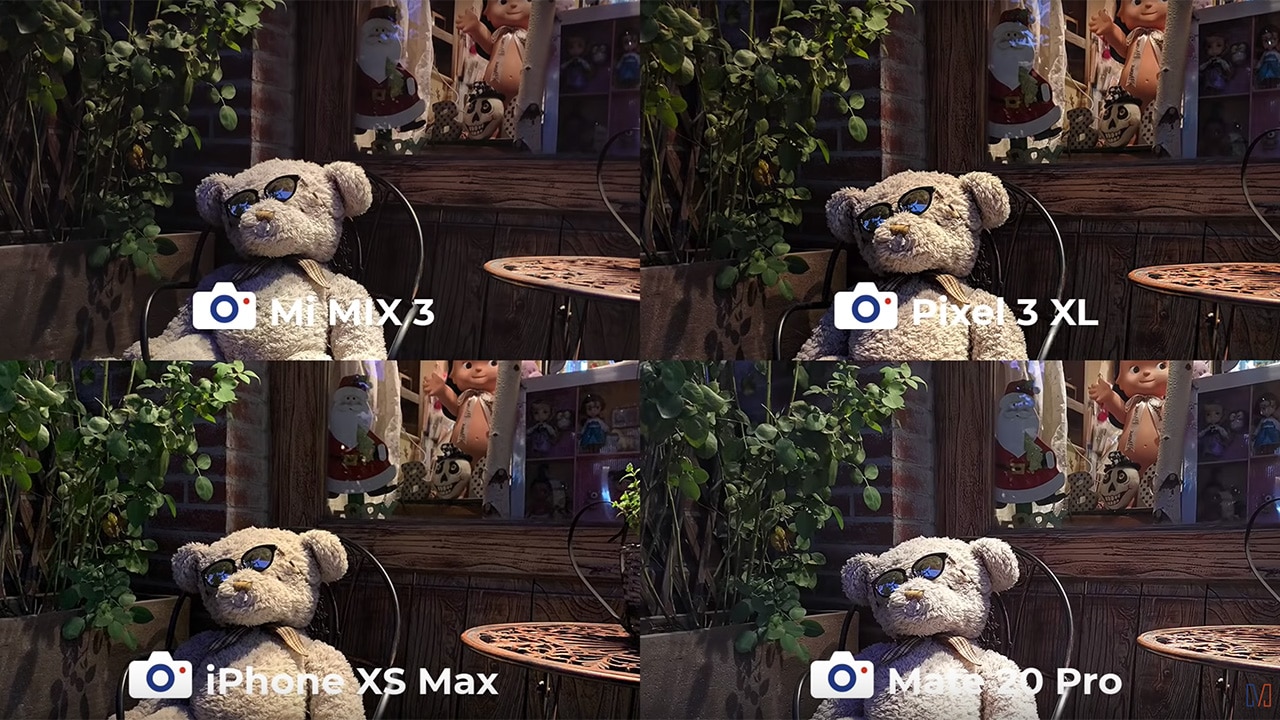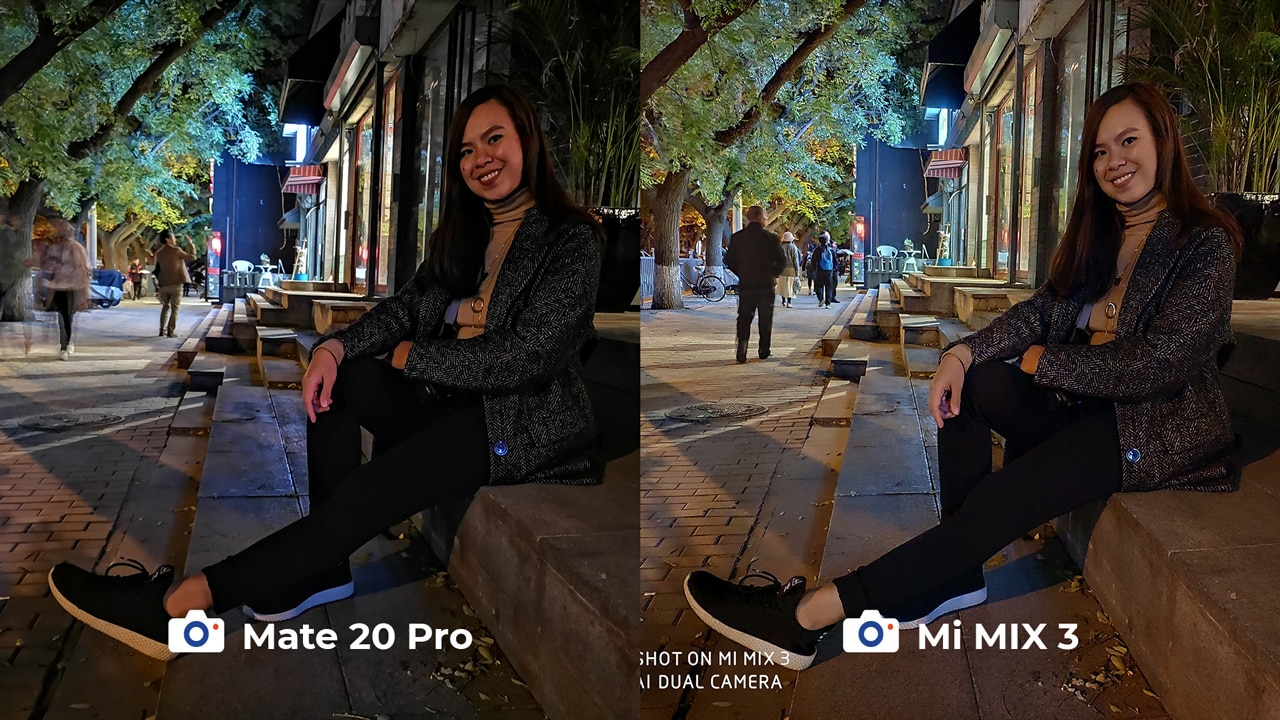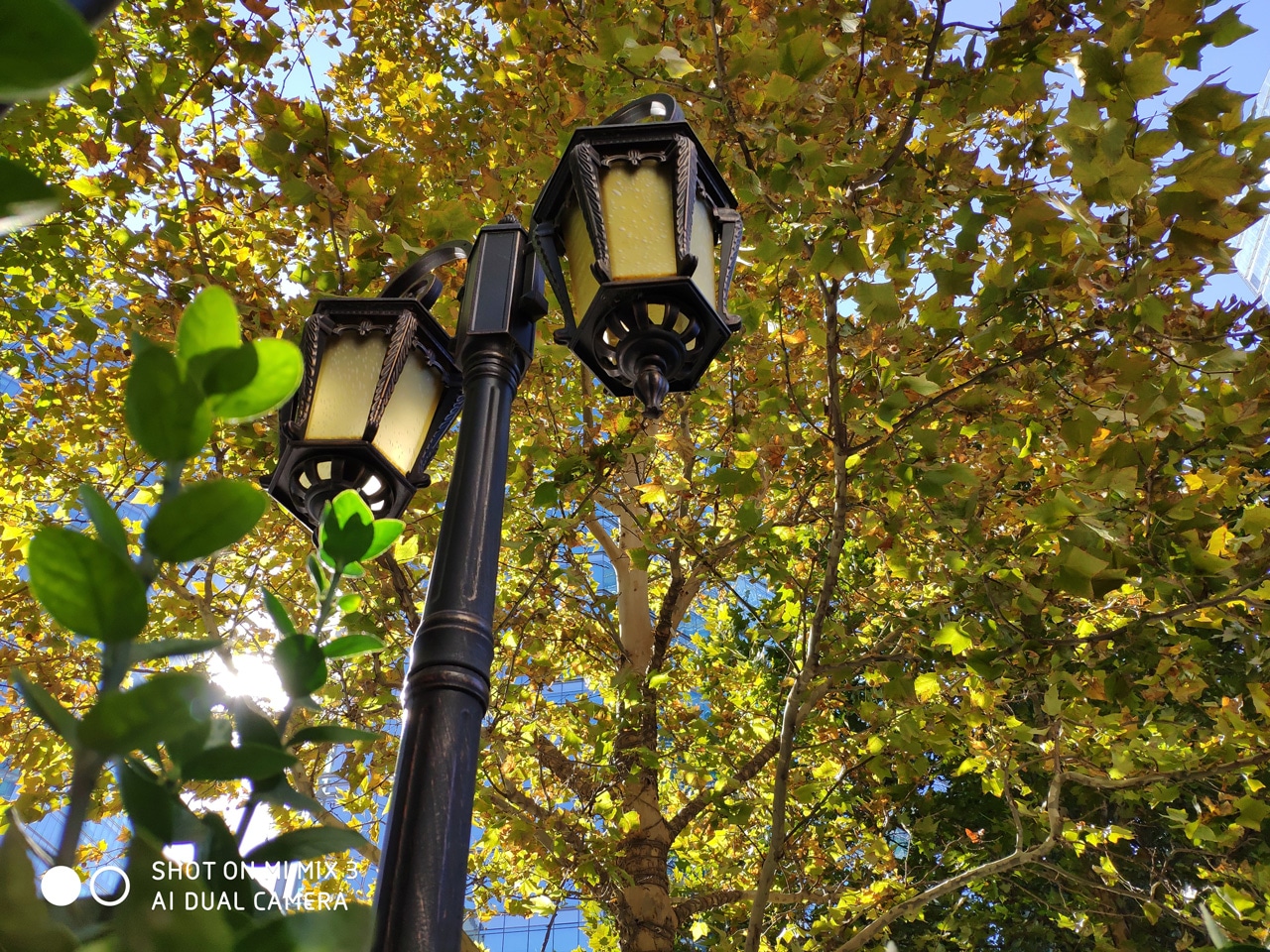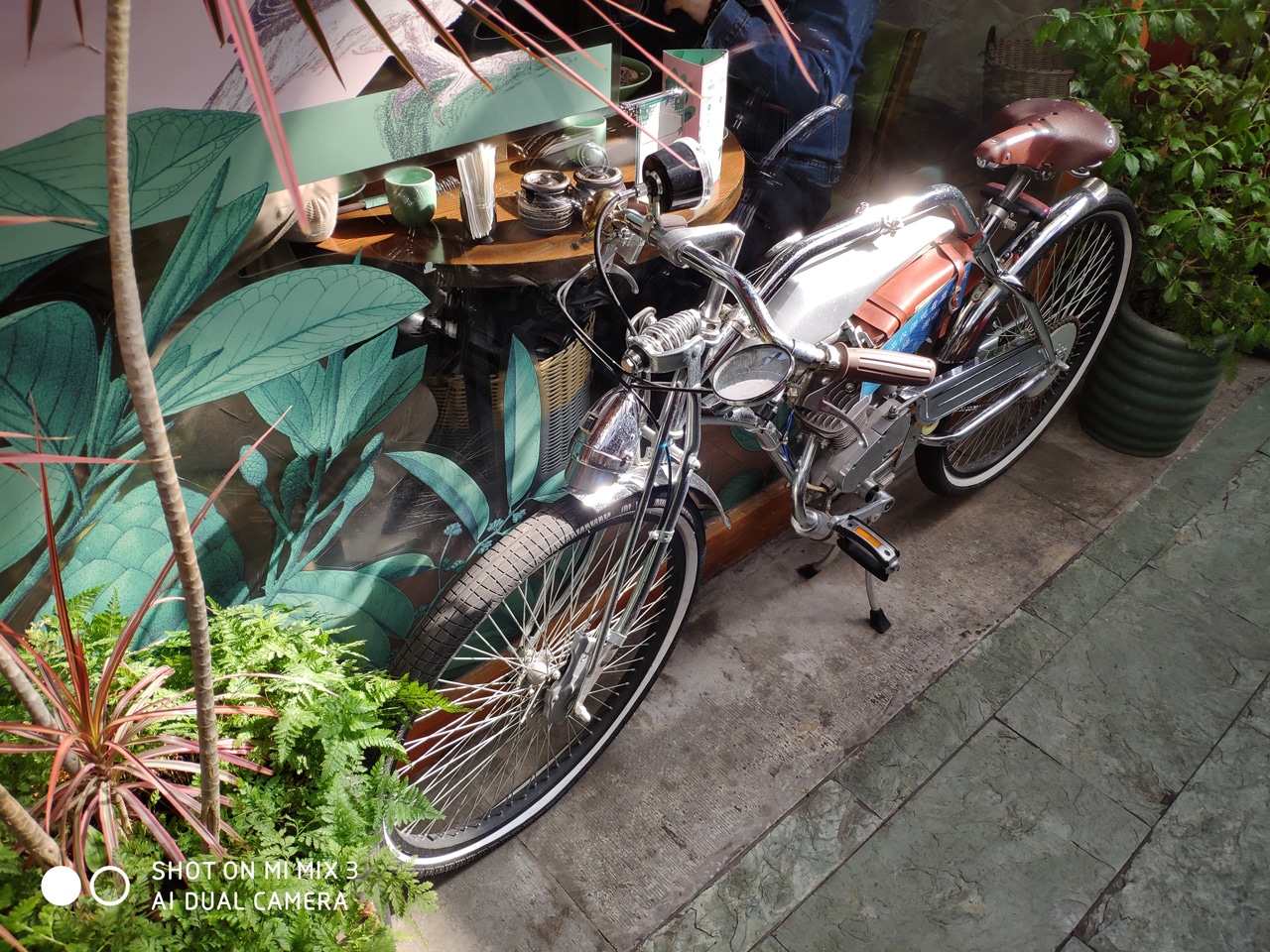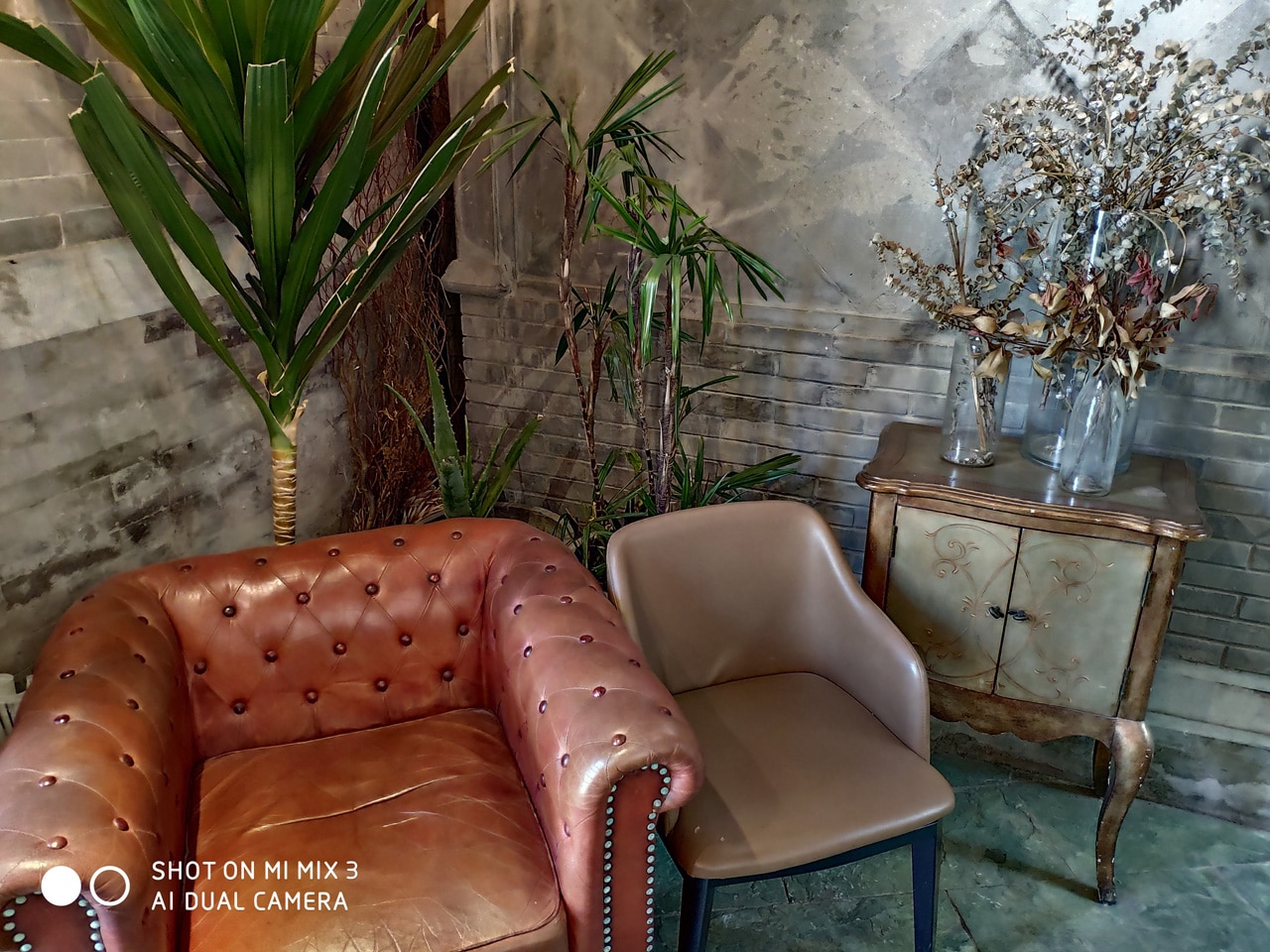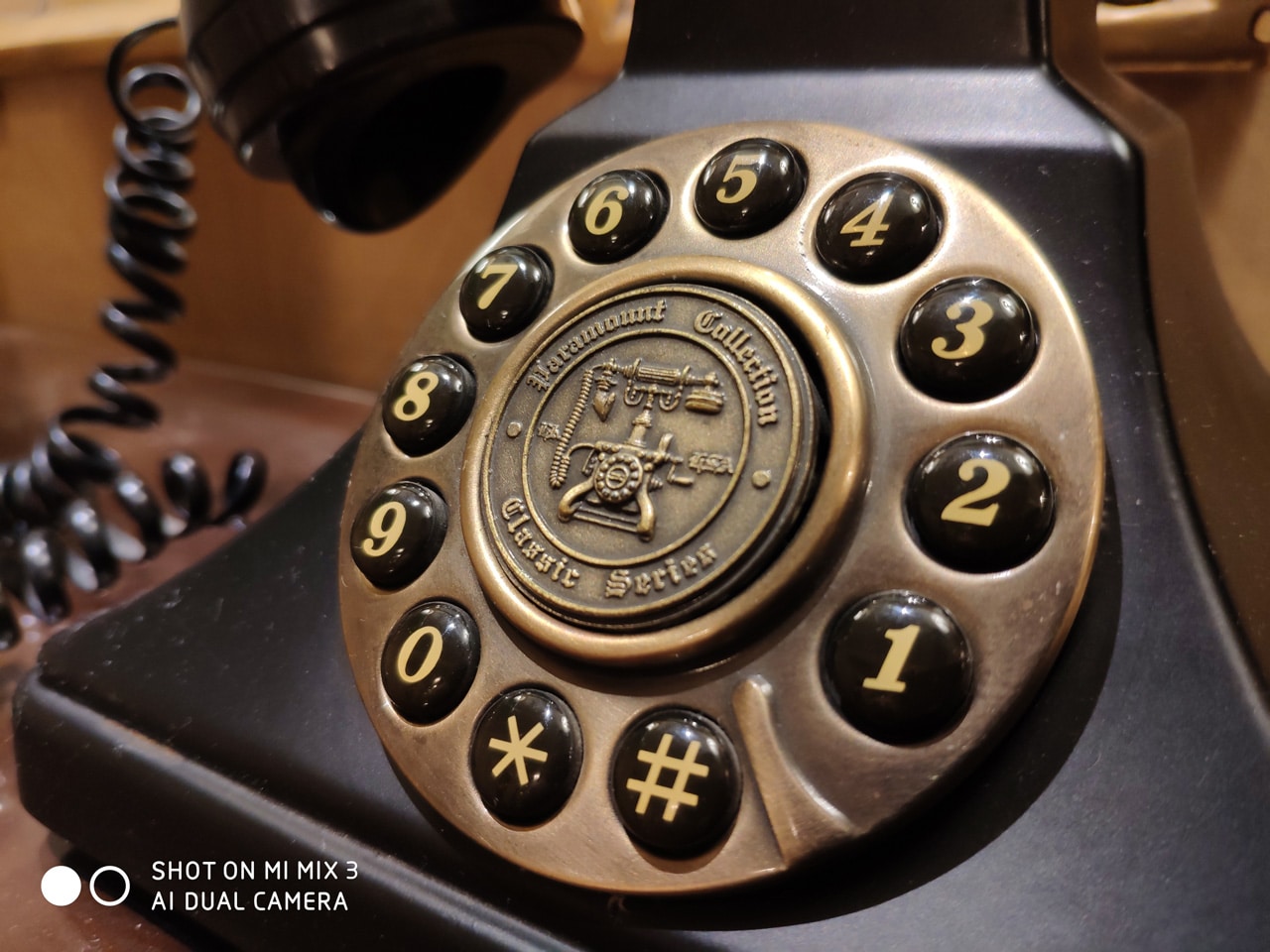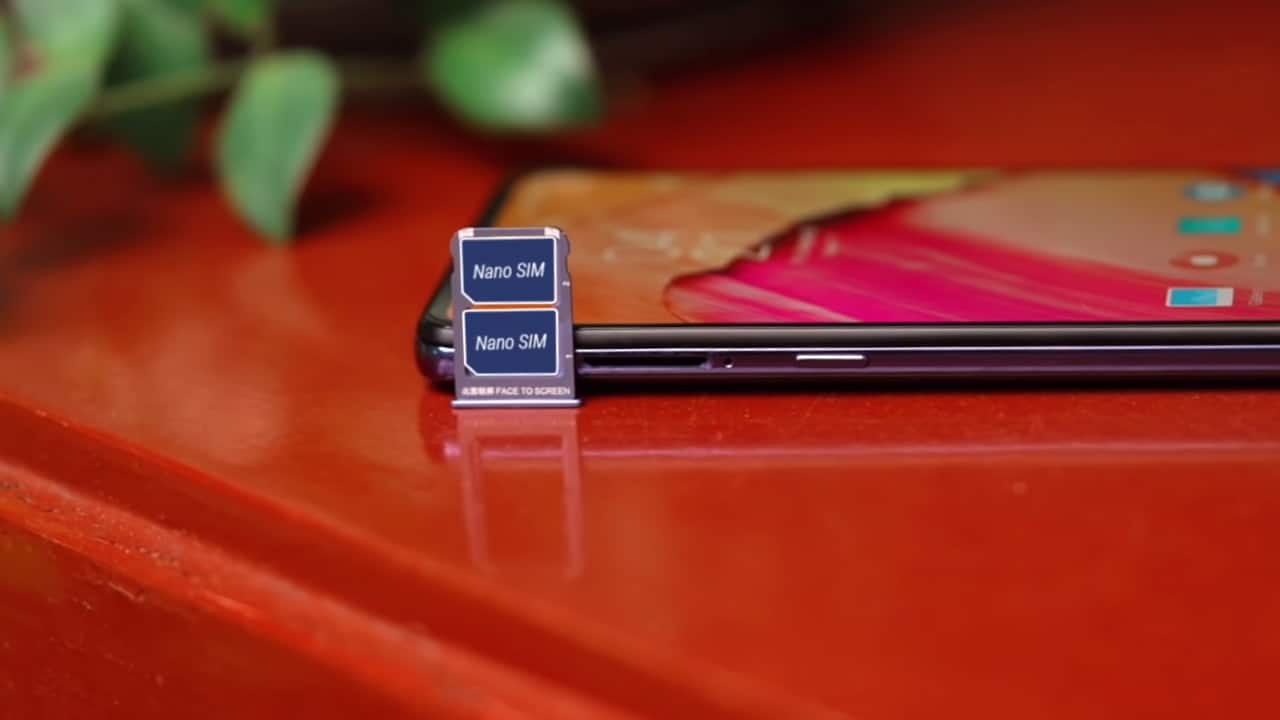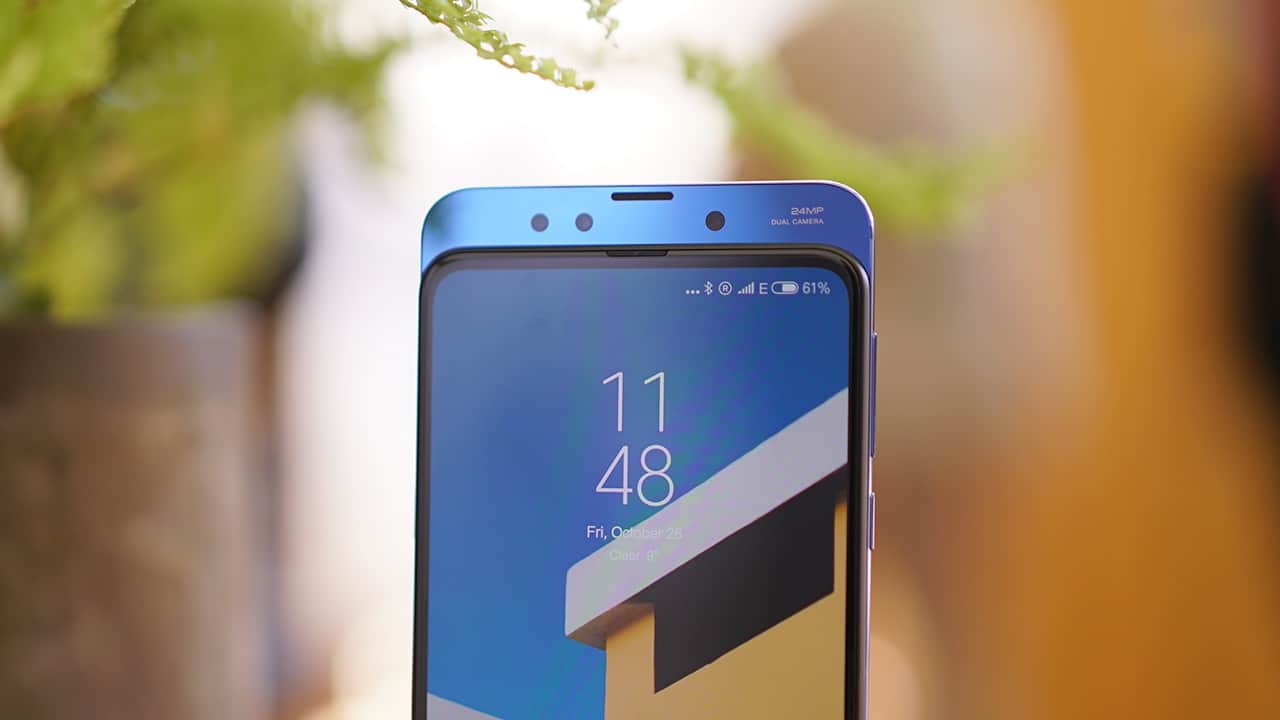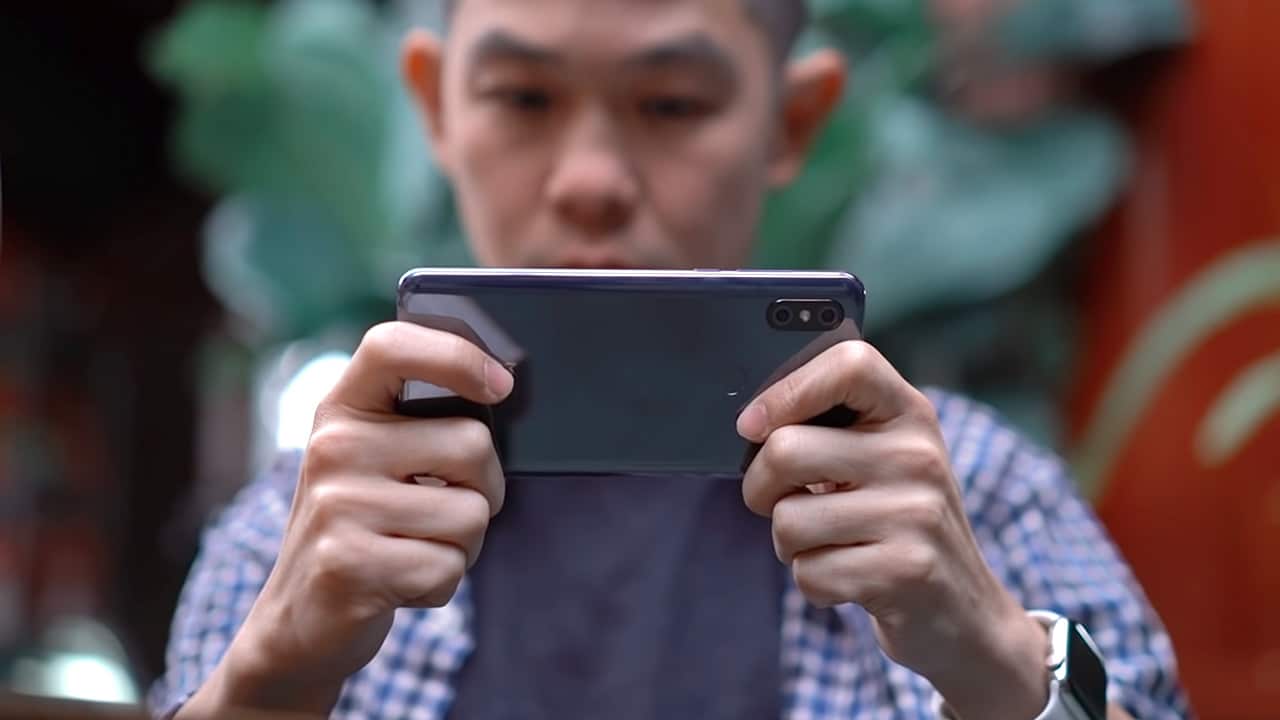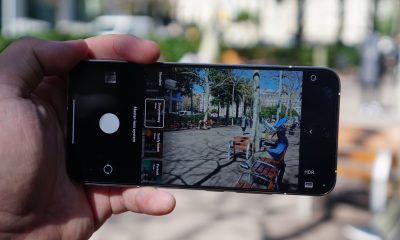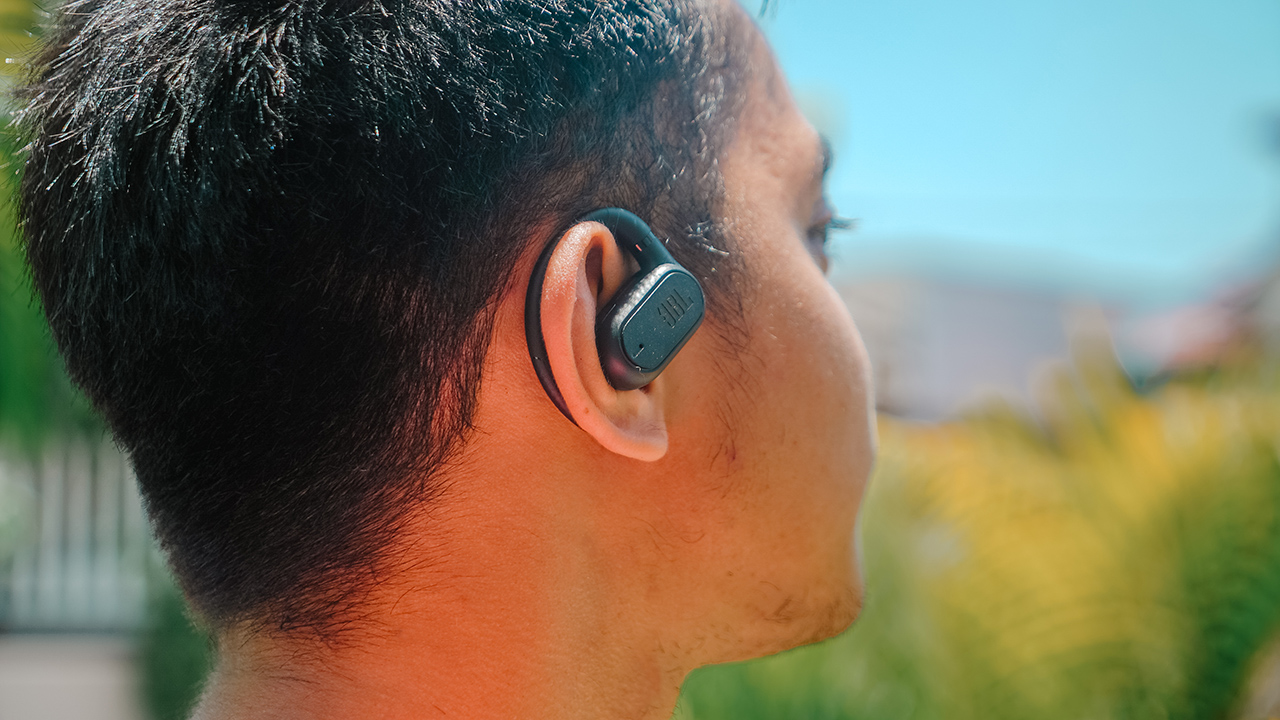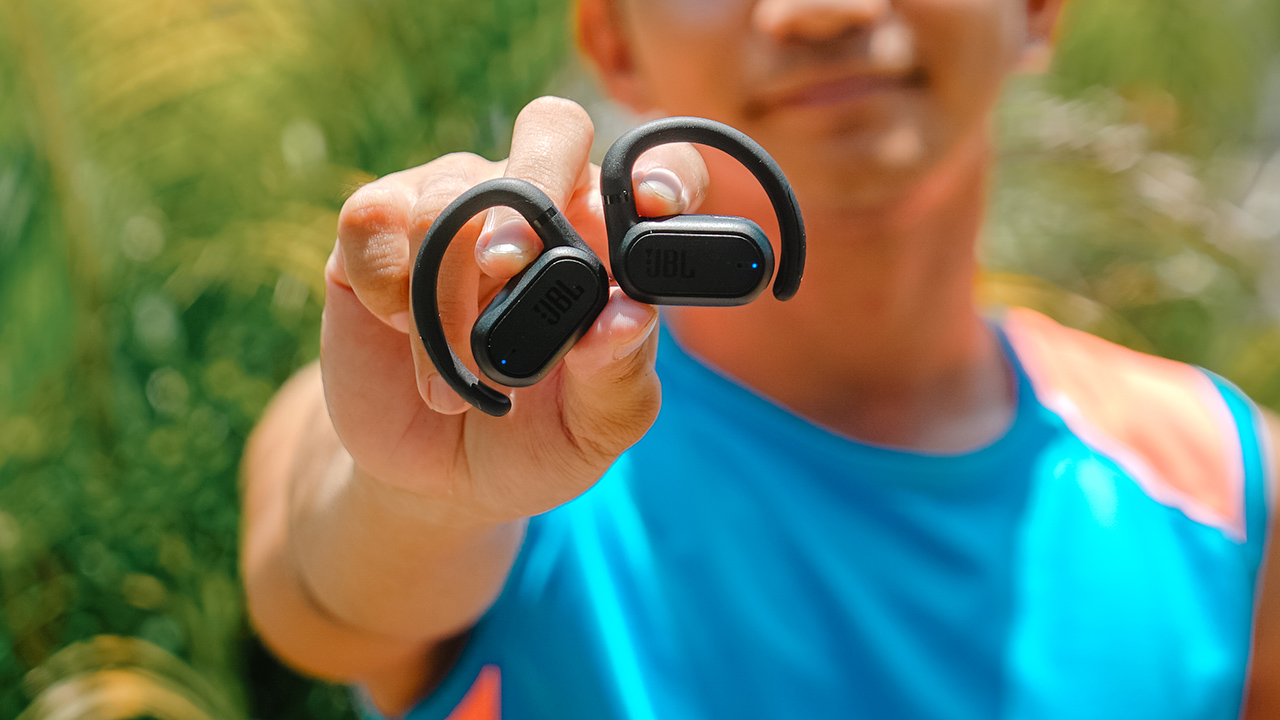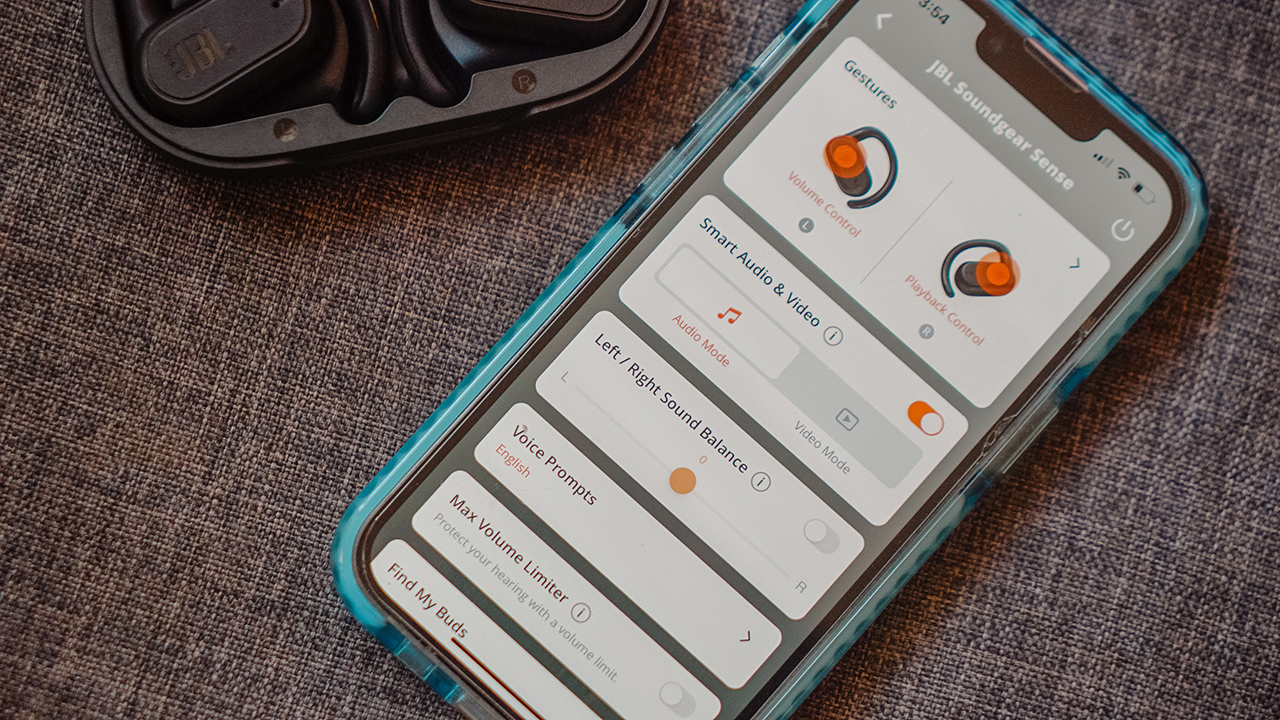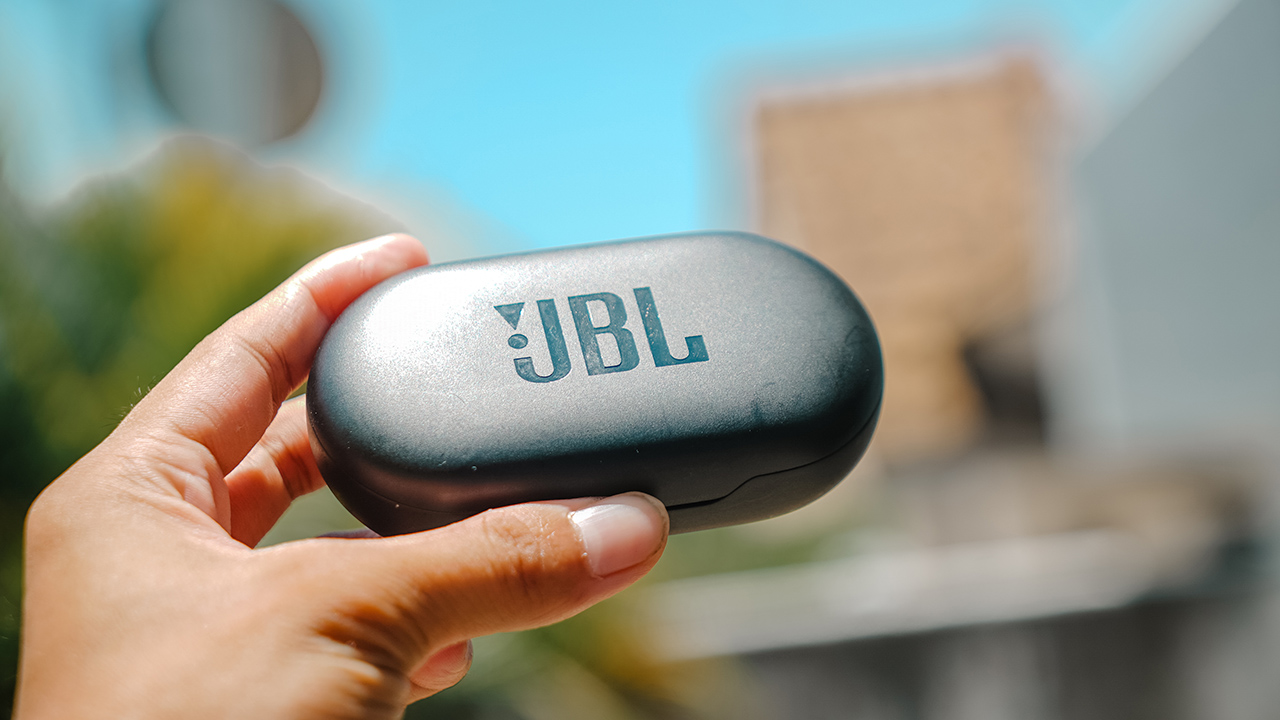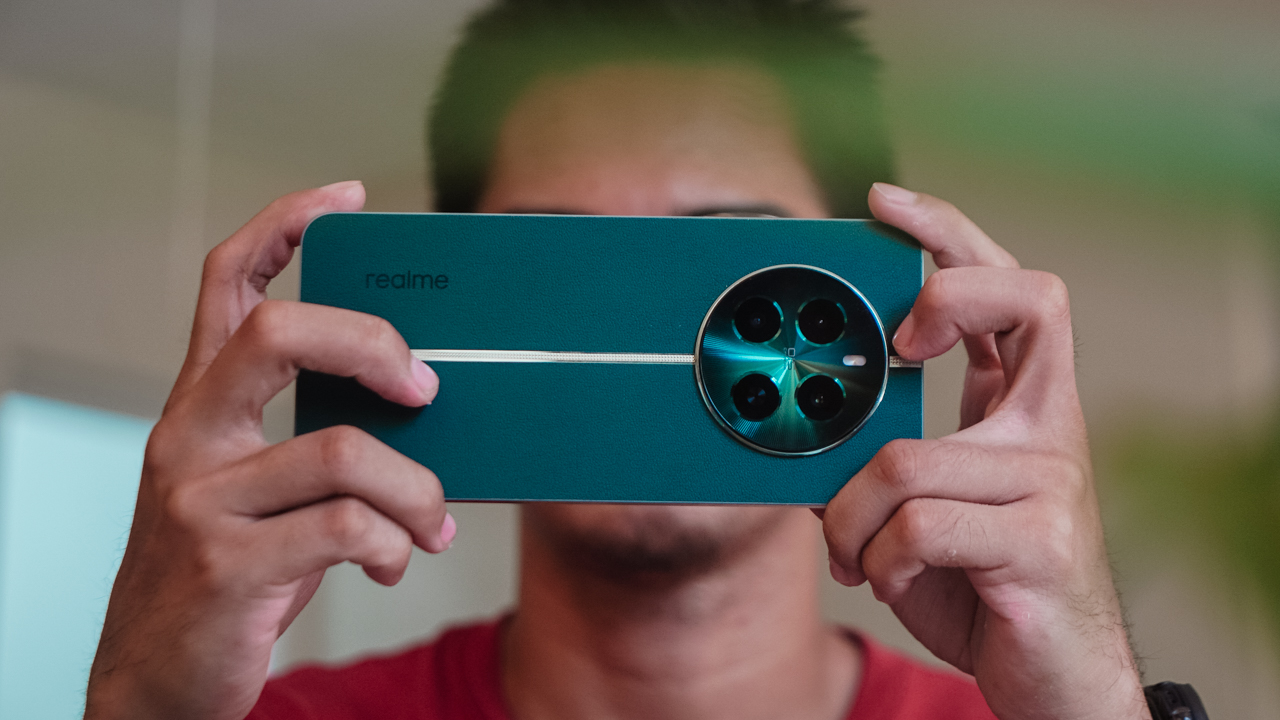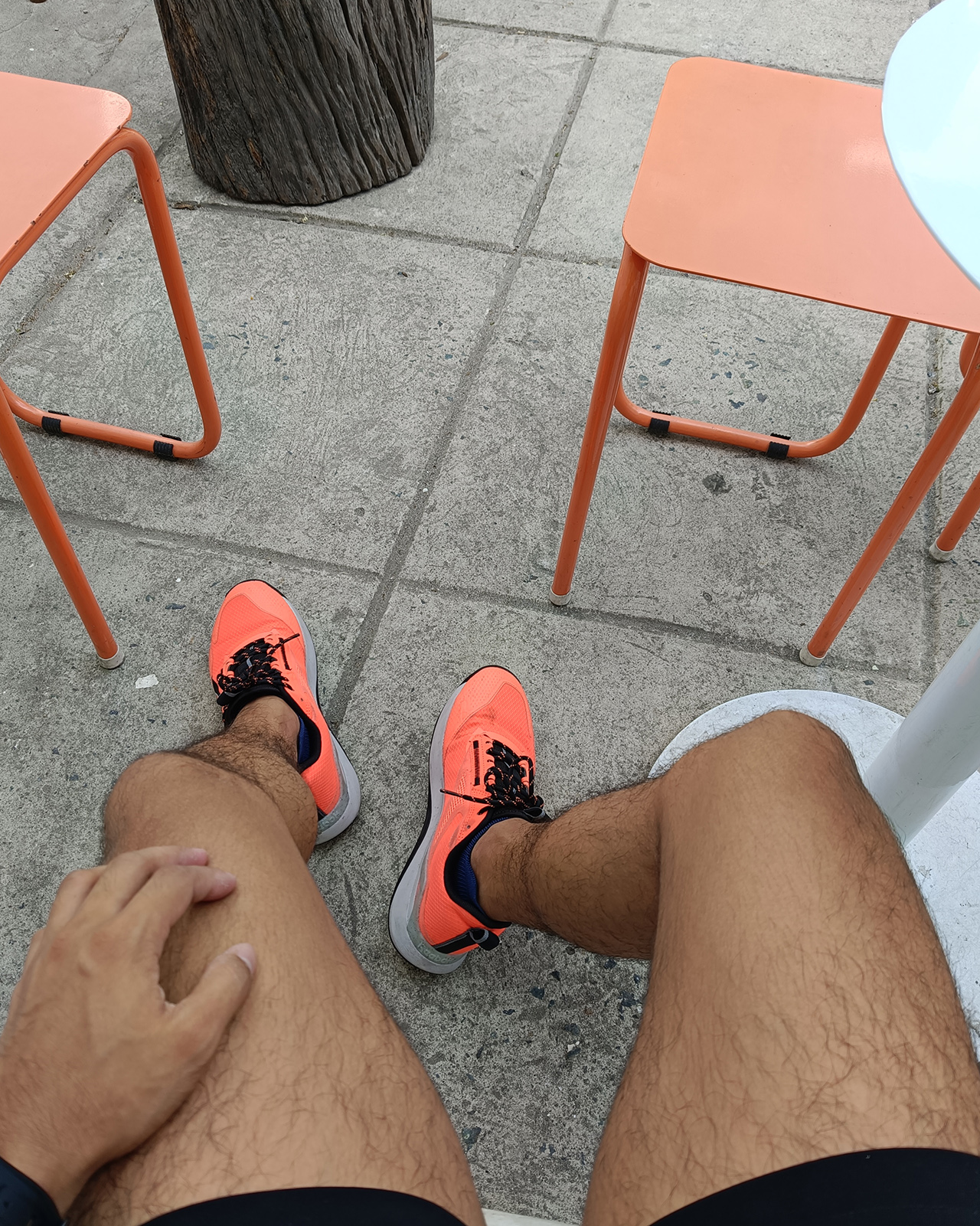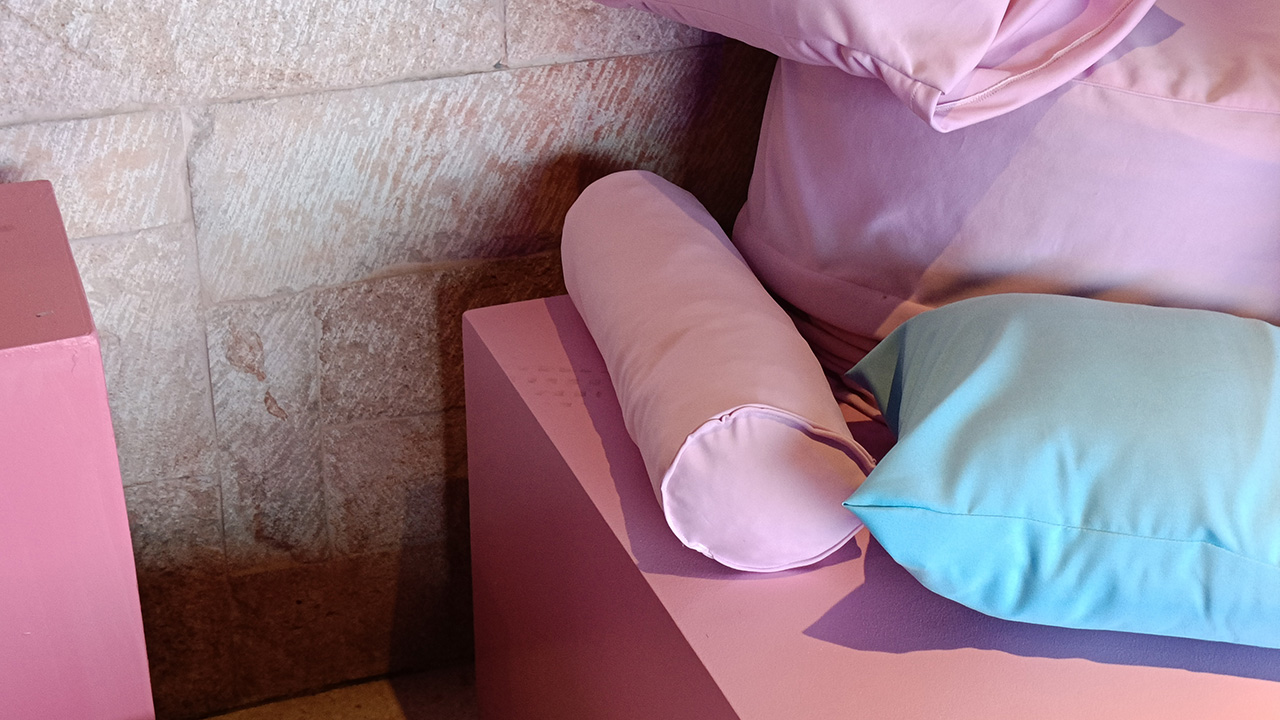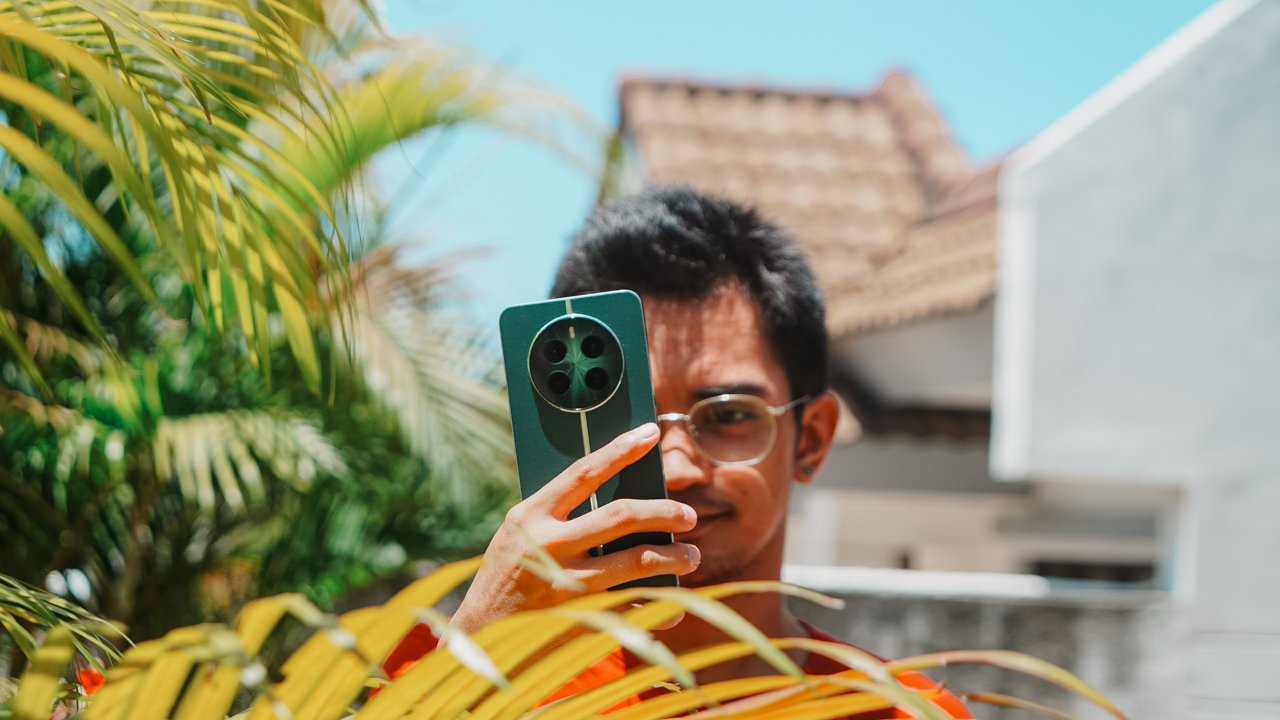

When Xiaomi first introduced the original Mi MIX in 2016, it wasn’t like any other smartphone we had seen. All display, all screen. It was supposed to represent the future and, quite literally, pushed the boundaries of phones as we knew them. Not long after, others followed suit, each with a different approach to an edge-to-edge smartphone: big notch, small notch, curved edges, and pop-up cameras.
In its first three attempts, Xiaomi’s approach to the borderless concept involved moving the selfie camera to the lower-right corner of the screen. This meant that the phone’s upper half looked like the future, while its bottom half, not so much. The front camera was both awkward and impractical; it meant not being able to use Instagram Stories or video calls normally.
Four iterations later, Xiaomi fully embraces full borderless and takes bold new steps into the future with the new Mi MIX 3 by hiding the front camera completely. This setup gives the phone a 93.4 percent screen-to-body ratio and brings users closer to Xiaomi’s original vision for the phone — computing on an embellished piece of glass.
Durable design
No matter which way you look at it, there’s no denying that a notch-less, all-display phone is gorgeous. While this solution solves one issue, does it create another? By tucking away the front camera system, you’ll need to slide the display down to use it. It’s similar to what we saw from OPPO earlier this year with the Find X sans the motorized mechanism.
While OPPO’s offering presented durability problems not just with its overall build quality, but also by relying on a single motorized mechanism to support all of its sensors, Xiaomi says its approach is more durable. The Mi MIX 3 employs magnets for that bit of resistance, and snap. It’s pretty satisfying actually and Xiaomi CEO Lei Jun says it can double as a fidget toy replacement — and fidget with it, we did.
Xiaomi says the phone is rated for 300,000 snap cycles. That means if you plan on using the phone for three years, that leaves you with around 274 cycles a day. As of now we can’t really say if this claim is accurate, but the Mi MIX 3’s design does feel solid and durable — no wiggle room for bigger particles to get stuck in between the display and camera.
Not available during our time with the phone were sound effects and app toolbars that bring an expanded feature to the slider mechanism. Xiaomi says these will roll out another time through a software update.
For that peace of mind, Xiaomi bundles a black hard plastic case in the box that works seamlessly with the phone. There’s a cutout at the bottom that allows the display to slide down without obstruction.
Cameras that can compete
Apart from looking good, Xiaomi says they chose the sliding form factor with photography in mind. So it makes sense that the phone comes with pretty good cameras.
In all, there are four: two on each side — a first on a Xiaomi flagship. Its dual 12-megapixel rear cameras are arranged vertically on the phone’s back and not built into the slider. To our delight, Xiaomi kept the 2x telephoto lens as a secondary camera that many brands opt to omit in favor of a rather inadequate depth sensor.
These cameras are highly rated on DxOMark, a subjective but still pretty good measure of smartphone camera performance. The phone is now the third-highest-ranked smartphone camera — tied with the US$ 1,000-Samsung Galaxy Note 9, and one step above the regular Huawei P20.
Compared to last year’s model, photo quality has improved, albeit the difference is only noticeable in the most challenging scenarios like when shooting against the light.
We thought we’d also throw in some comparisons versus the Pixel 3 XL, iPhone XS Max, and Huawei Mate 20 Pro to show how it fares against some of the best smartphone cameras available in the market.
There are new features like 960fps super slow-mo video, video bokeh, as well as night mode, which works similarly to handheld low-light exposure shots on the Huawei P20 and Mate 20 series.
Here’s how it looks against similar shots taken with the Mate 20 Pro’s night mode.
There’s still AI scene detection built in, which you can turn off with a tap. This mode usually boosts color and saturation, although we usually prefer to leave it off since there’s no option to do so after taking the shot the way you can on Honor phones and Huawei’s Nova series.
Here are more photos we took around Beijing.
Underneath the display is the front camera system: a whopping 24MP selfie camera and a secondary 2MP lens to assist with portrait blur, plus a flash for low-light selfies.
There are also some fun portrait mode features available on both the front and rear cameras that you can add after the fact like adjusting background blur, light trails, and studio lighting effects. Our favorite is light trails, which was first teased during the Mi MIX 2S’ launch in spring. You can even save them as videos!
It’s not perfect but Light Trails on the #MiMIX3 is so much fun 😆 I’ve been wanting to try this since they teased it during the #MiMIX2S launch in spring! pic.twitter.com/m2UiFnOchs
— Chay Lazaro (@chaylazaro) October 31, 2018
In the Chinese version of the phone, there’s also feature called Magic Mirror which rates your mug on a scale of 1 to 10. There’s clearly something wrong with the software here since since we only got scores below 8. 😂 Rest assured, we didn’t let this affect our self-worth all that much.
It’s also worth mentioning that since the front cameras are no longer placed at the bottom of the phone, they now double as a face unlock system. While unlock times are quick and sliding the phone down make us look really cool, we personally prefer using the back-side fingerprint sensor in this case since it was still the more convenient option between the two.
Beauty and a beast
Just like its predecessors, the Mi MIX 3 is a handsome phone. With the right amount of curves and a ceramic finish, it looks good from any angle. Apart from the usual black, it comes in two extra colors — Sapphire Blue and Jade Green, inspired by, well, jade. Because of its ceramic finish, the phones look somewhat similar when viewed in certain angles.
There’s also a special Palace Museum Edition that comes in a different shade of blue, inspired by Chinese ceramics. This variant boasts of a 10GB+256GB configuration.
Sapphire Blue is our favorite color of the three. Its front camera module has the same blue finish as the back, unlike Jade Green, which has black.
The ceramic finish is still a fingerprint magnet, and can be slippery at times. The phone is also taller, narrower, curvier, and less boxy than the MIX 2S. This makes it easier to wrap your palms around, although it could feel too tall sometimes. Unless you have large hands, sliding the display down might be a bit of a struggle.
On the left side, there’s an extra button dedicated currently to Xiaomi’s personal assistant Xiao Ai (literally translated “little love”). For its global versions, Xiaomi says it’s working on Google Assistant functionality, although it would be nice if they also gave users the option to remap it. A dual-4G nano SIM card slot also slides out of the left side, but there’s still no expandable storage.
There’s an earpiece at the very top of the phone, and when you slide the display down, you’ll find a set of speakers underneath. The sound that comes out of it is very faint compared to the main speaker grille found at the bottom, beside the USB-C port. And nope, there is no headphone jack.
Internally, Xiaomi packed what is expected of a 2018 flagship: Qualcomm’s top-of-the-line Snapdragon 845 chipset, up to 10GB of RAM, and 128GB or 256GB storage configurations. This means the Mi MIX 3 can handle virtually anything you throw at it without lag. Yes, PUBG works perfectly fine at the highest settings.
One of the MIX line’s strong suits has always been great battery life, partly due to a higher-than-average battery capacity. To say we’re disappointed to see a measly 3200mAh battery in the MIX 3 is an understatement. During our time with the phone, we barely got through the day with minimal use on a single charge. We had to plug in the phone even before we got around to playing PUBG on it.
Of course, battery capacity isn’t everything. With MIUI’s consistent updates, we’re hopeful the phone can be optimized further to handle basic tasks without sucking too much power. This being a Chinese version with side-loaded apps might also be a factor. On a more positive note, the Mi MIX 3 supports Quick Charge 4+ and is bundled with a Quick Charge 3.0 adapter. Fast charging is always welcome, and should be a standard in any flagship device launched this year.
Like the MIX 2S, the MIX 3 also supports wireless charging. In even better news, there’s a 10W wireless charger included in the box — a really nice touch. Other brands should take note: add free accessories, don’t take them away.
Stunning display
More than anything, this phone is all about its display, all 6.39 inches of it. After all, an all-screen experience is what Xiaomi’s most premium line of phones has always been about. For the first time in the MIX line, the Mi MIX 3 gets an AMOLED display and we can say that it does this borderless design justice.
Everything pops at you, or is it the other way around? The display draws you in. Colors are vibrant, text is crisp, and viewing angles are great.
Although, just like any phone with a taller aspect ratio, videos aren’t designed to fill the entire screen, which defeats the purpose of immersive entertainment. When you’re watching YouTube, for example, you can pinch to fill the screen, but expect some content to be cropped out unless the video was made for the taller aspect ratio.
Netflix also doesn’t fill the entire screen even when zoomed in. There’s a black bar on the right when watching in landscape mode so the phone ends up looking like it has a huge chin that fans love to hate.
Is the Xiaomi Mi MIX 3 your GadgetMatch?
The MIX line is not for everyone, and the Mi MIX 3, with all its bells and whistles, is no exception.
It’s an interesting piece of tech, still with bits and pieces of the future Xiaomi envisioned this phone to represent. The sliding display is a novel idea but we’re curious to see if it will stick or if other manufacturers can find even better solutions to the all-display, no-notch dilemma.
With the headphone jack and expandable storage indefinitely absent in the MIX line, we would have loved to finally see water resistance for added protection instead. The Mi MIX 3 would have been an easy phone to recommend had it offered a bigger battery to match its larger display. Unfortunately, it’s no longer a phone made for heavy users the way its predecessors were.
Just like its predecessors though, selfies are still not a priority for this phone despite the dual-camera upgrade in front. Unless you genuinely enjoy sliding half the phone down just to reveal the front cameras, taking selfies is still an inconvenience compared to a few quick taps on other phones. If you have small hands and are clumsy, we’d even go as far as saying this is more inconvenient than the previous generations’ awkwardly placed cameras; you will end up dropping this phone at some point sliding the mechanism down trying to take a selfie.
But at a starting price of CNY 3,299 (US$ 475), the Mi MIX 3 is easily a top contender in the best bang-for-your-buck race. It’s not perfect, but it’s closer to perfection than most smartphones in this price point. Aside from impressive cameras, the beautiful notch-less display, and overall performance, we recommend this phone for its novelty and for users who hate Thanos-like chins on smartphones.
Otherwise, the MIX 2S launched in March is a great choice and is still one of the most beautiful and capable smartphones this year. You’ll get the same performance, dual cameras, wireless and fast charging, and a much better battery life. It’s likely to get a discount, too, as soon as the MIX 3 starts rolling out to more markets outside China. Xiaomi says most of the new camera features on the MIX 3 will also come to the Mi MIX 2S.
If you live in Europe, it’s also best to wait as Xiaomi promises that 5G versions of the Mi MIX 3 will launch in the region some time in early 2019.

Reviews
Challengers review: A thrilling drama wrapped as a tennis anime
Catch it in Ayala Cinemas starting April 24th

Tennis is more than just hitting a ball really hard with a racquet. There are player tics, serving techniques, mind games, and, of course, drama off the court. Challengers, starring Zendaya, takes the entire game and turns it into a dramatic thriller worthy of Wimbledon.
In Challengers, Art Donaldson (Mike Faist) is an aging tennis superstar desperate for one more big win. His wife Tashi (Zendaya), a retired tennis star in her own right, does everything to coach Art back to his winning ways. Opposite them is Patrick Zweig, a former-friend-turned-rival, facing Art in the final match of a Challenger.
As premises go, Challengers seemingly presents a straightforward sports drama. It’s a simple one-versus-one, after all. However, the film’s 2-hour-plus runtime hides a more complex drama.
The second-strangest ménage à trois in film
The film starts in media res: the first set of the final match. It doesn’t tell you who Art, Patrick, or Tashi is. It’s just a friendly match. There are, however, questions abound. Why is Zendaya’s character looking intently at one of the players? Why is the other player concerned that she is looking at his rival and not him? Who are these people?
Before you can ponder each question, the film takes you through multiple time jumps. The earliest (and longest) of which — thirteen years ago — sets up the story. Art and Patrick are two best friends and tennis prodigies teaming up to decimate the competition at their school. Everything changes when the two friends catch a match of another young prodigy, Tashi Duncan.
Both friends engage in a friendly competition to see who can successfully flirt with her. The sequence ends in the second-strangest ménage à trois committed to film. (To see the strangest one, catch Alfonso Cuarón’s Y tu mamá también, a clear inspiration to Challengers.)
The time jumps don’t end there. The story quickly volleys back and forth between different times in the past and the present, including years, months, weeks, and even hours ago. Sometimes, the skips result in the cinematic equivalent of whiplash from watching a tennis ball rapidly travel from left to right. But if you just follow the ball, it ends with one of the most thrilling, edge-of-your-seat dramas this year.
Blink and you’ll miss it
Despite how creative the time skips already are, Challengers shines with its subtler elements: the tiny movements, the tics that seasoned sports watchers can catch. Much like how a play-by-play commentator directs a viewer’s attention to what makes a player tick, the film subtly shows you elements of an even deeper story that it may or may not expound on.
Early on, Challengers shows a blink-and-you’ll-miss-it scene featuring Tashi’s knees. If you weren’t paying attention, you might have missed a scar from a surgical incision, hinting at why Tashi retired from the sport.
In that particular example, the film does dwell on it a bit in a past flashback. However, there are plot points that the film just drops on audiences with nary an explanation. For example, you might see telltale injection marks up Patrick’s wrist or a short-but-telling rehab session for Art. The film drops these nuggets only for the viewer to ponder. They’re short, but they paint a compelling picture to complement the action on the court.
It’s a tennis anime
In essence, Challengers is just about a tennis match between two emboldened competitors. However, like an anime battle that takes ten episodes to resolve, the film understands that the sport is not just about results: it’s about all the tiny movements, strategies, and dramas. If Wimbledon was this thrilling all the time, I should probably tune in a lot more.
Challengers shows exclusively in Ayala Cinemas starting April 24th.
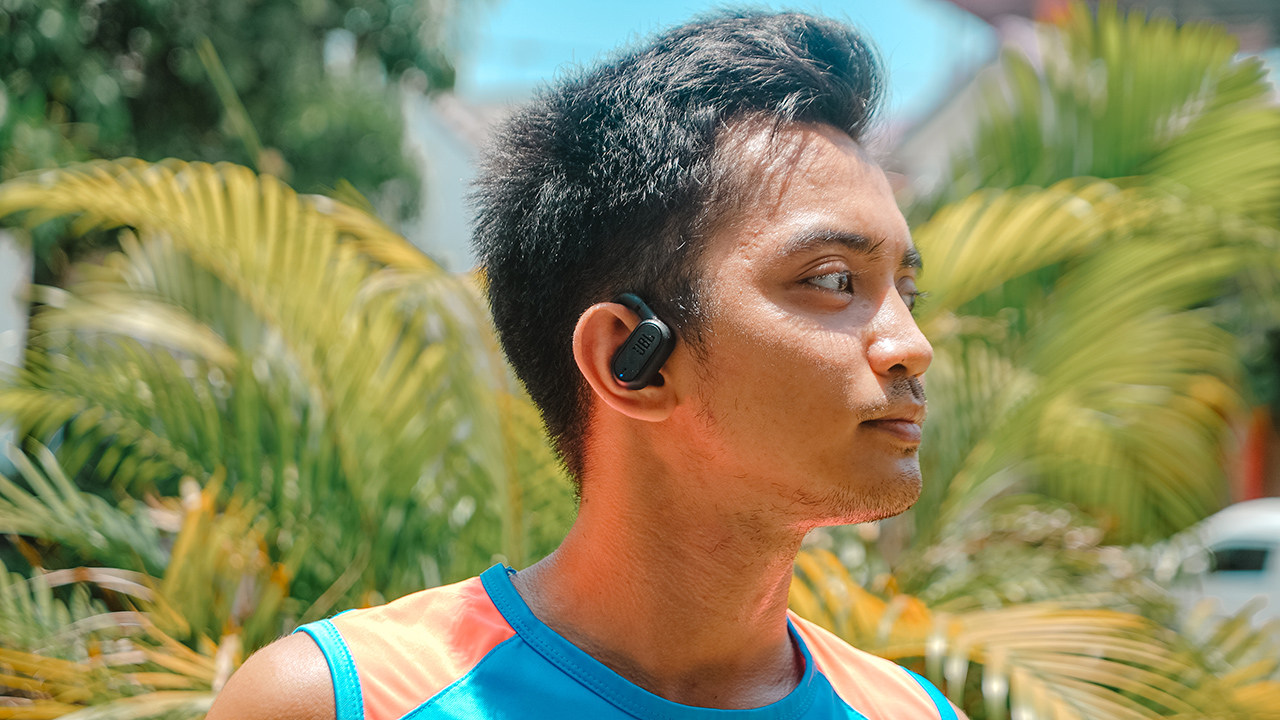
Running has been a form of meditation for most people. To some, it’s a time where your mind goes blank, allowing you to have a break from your stimulated mind.
For others, like yours truly, it’s a moment to sort out thoughts and emotions after having a preoccupied day. A common denominator between runners is doing the activity alone, accompanied only by their smartwatches, a hydration flask, and good music.
I’ve been using true wireless earbuds to accompany me on my runs, but the advent of JBL Soundgear Sense piqued my curiosity.
What is it like to use open-ear headphones when out for a run? To find the answers, I used the Soundgear Sense during my ongoing race season.
Take the long way home
As I put on mileage for my upcoming races, I have been required by my coach to add more slow runs to improve my aerobic base. That entails long, boring runs for an hour or two.
Imagine the agony of finishing a minimum of 10-kilometers by relying on your heart rate and not your pace. That was when I sought solace from the JBL Soundgear Sense.
I didn’t realize that having open-ear headphones would allow me to take on scenic and busy routes without worry that a car might hit me.
Unlike when I use true wireless earbuds that fit snugly in my ears, the Soundgear Sense are hooked and clipped on the curve of my ears without covering the ear canal.
This allowed me to hear my surroundings while still enjoying my favorite songs from Taylor Swift and BINI, a rising P-pop girl group.
Open but still private
Even if the Soundgear Sense has an open-ear design, rest assured that there’s zero sound leakage. JBL’s OpenSound technology made sure that the sound pressure is directed through waves towards the ears, while also reducing sound dispersion.
There’s a certain shame in having people find out whom you’re listening to. Maybe because you don’t intend to share the music you’re enjoying. But if you opt to share your jam, might as well have a Bluetooth speaker, right?
That’s why I liked the idea of keeping it open but still private — in relationships and my wearable. I get to enjoy “Pantropiko” and “Salamin, Salamin” by BINI all by lonesome, while still attuned to my surroundings.
It also helps that each earbud has a 16.2mm driver with a unique bass-enhancing algorithm. The sound allowed me to immerse myself in the songs I was playing, but still aware of the external noises of the streets. Somehow, the Soundgear Sense felt like a second, inner voice whispering thoughts through music.
Hybrid design for hybrid athletes
I don’t just run. I also lift on the same day right after running. Being a hybrid athlete allows me to prepare my body from the demands of multi-sports training and partaking on a Spartan race.
I like how the Soundgear Sense has a hybrid design that makes it apt for different type of workouts. Its adjustable earhooks are clipped perfectly, which doesn’t fall off even when I’m doing plyometrics. It’s also steadily in place even if I sprint and/or do some speed training.
Even when I’m heavily sweating, the Soundgear Sense didn’t slip off. With an IP54 rating, it’s dust-, splash-, and sweat-resistant.
Also, the way it’s designed is secured to fit on whatever activities you have, regardless of sweating. Except gymnastics and parkour, though.
The Soundgear Sense might fall off after you hang or flip from those extreme activities that require being suspended in the air.
For added security, there’s an included neckband inside the box. However, I hate having something dangling on my nape so I never used it.
Moreover, I couldn’t last more than an hour having it clipped even with a supposed hybrid design. It hurts my ears eventually, and I feel like someone was pinching my ears and I couldn’t do anything.
If I have runs for more than an hour, I’d opt not wearing both earbuds.
Easy connectivity
One thing I like about JBL is how easy it is to connect your wearables to your smartphones, be it an iPhone or an Android.
Once both devices are paired, flipping open the case will instantly connect the Soundgear Sense to your smartphone.
While running, I don’t have to constantly check my phone since the Soundgear Sense, along with my Garmin epix Pro (Gen 2), helps me stay connected. With just a single flick on the earbud, I can control my music, volume, and calls.
My friend, Betty, called me one time while I was out for an easy run and she barely realized I was running until I gasped for my breath when running on a steep incline. It’s convenient to have crisp and crystal-clear calls within your reach.
And to make it more convenient, the touch controls can be personalized to your liking. On the left earbud, it’s usually the volume control.
One tap and it increases the volume, while double tapping decreases it. When someone calls, you can double tap to respond or you can tap and hold to reject the call.
The right earbud uses the same call control, but it’s automatically set for playback control. You can switch earbuds depending on the gesture you prefer.
All of these customizations can be done using the My JBL Headphones app.
Definitely long lasting
I have had the Soundgear Sense for two weeks now, and both earbuds still have a half battery life from a single charge. As of writing, the left earbud still has 51% while the right earbud has 56%.
Thanks to its charging case, both earbuds keep recharging every time they’re stowed inside.
But if you’re wondering why the left earbud has a lower battery life, it’s not because I spend too much time watching adult-rated content.
A lot of times, I run with just the left earbud clipped on my ear to stay alert from my surroundings. Even with OpenSound technology, I tend to get lost in the music I’m listening to whenever I have both earbuds hooked.
Considering I’ve amassed more than 70km of running mileage for two weeks with almost 10 hours of running, the Soundgear Sense surprised me with its battery life.
I haven’t charged it since then, which made me wonder how fast it would really be, if I get to drain it down to zero and juice it back up to 100. Perhaps, stay tuned on my Instagram and TikTok accounts?
The Soundgear Sense is expected to let you listen wirelessly for up to 6 hours. You get an extended life of another 18 hours through the charging case. A quick 15-minute charge through the Type-C port gives an additional 4 hours of music.
Is this your GadgetMatch?
For an athlete, the JBL Soundgear Sense surely makes every run magical. The design and technology were innovated with runners in mind. The device integrates seamlessly to any type of active lifestyle.
It will boil down to preference, whether you enjoy an open-ear design clipped onto your ears or you’d enjoy an earbud blocking your ear canal.
As for me, I think I’ll switch and pick the Soundgear Sense to accompany me in my race season. It helps me immerse myself in good music, stay connected, while keeping me attuned to my surroundings. This ensures my safety when out for a run.
It’s easily a GadgetMatch for all types of athletes dedicated to fulfilling their training assignments. It’s also for fitness enthusiasts entering their “runnerist” era.
The JBL Soundgear Sense retails for PhP 9,499. It is available via JBL’s website and select, authorized retailers.
Reviews
realme 12+ 5G review: One month later
What is it like to spend a month with a midrange smartphone?

What is it like to spend a month with a midrange smartphone?
For someone spoiled with high-end, flagship smartphones, a watered-down experience terrifies me. I couldn’t fathom using just a midrange smartphone, even if I’m counted as a casual user.
But spending a month with the realme 12+ 5G gave me a new perspective on what midrange smartphones at 2024 can do.
Powerhouse at a fraction
A lot of times, I’ve used the realme 12+ 5G to play Mobile Legends: Bang Bang. I know, I know. It’s 2024 and I’m still playing the same old MOBA but it’s a game I know all too well that helps me de-stress after a long day.
See, I’m an athlete balancing my work and life. Sometimes, I just want to rot in bed while playing on my phone.
The realme 12+ 5G helped keep me sane thanks to its lag-free gameplay. Not once did I feel any heat or slowing down even while playing in an Ultra Graphics and Super High Frame Rate setting.
The Vapor Chamber Cooling System came into play, dissipating the heat so even if under heavy usage, the gameplay is still optimal.
Moreover, the realme 12+ 5G uses a MediaTek Dimensity 7050 chipset. When you combine this with a 12GB dynamic ram that’s expandable through your storage space, you won’t have to worry about a watered-down experience from using a midrange device.
The RAM can take up from 4GB up to 12GB to be re-allocated from the 256GB internal storage. Though, I only used 4GB since I didn’t feel the need to turn it up to the highest configuration. It’s already smooth even when multi-tasking.
It may not be as smooth as the flagship smartphones I held, but it’s enough particularly for people who just needs a smartphone they can use for their everyday lives. However, if you want a midrange device dedicated for an even more intensive gameplay, I’d suggest looking elsewhere.
Daily companion for viewing, listening
When I was on my way home from my training, I drove past a busy road in Pasig City where vendors are in the streets, bystanders are frolicking, and loafers gossip while taking space through the plastic stools they sat on spread out near the sidewalk.
What do they have in common? Smartphones. There was a realization that the Filipino masses rely on their devices to be entertained and connected.
I have a feeling that if I wasn’t a multi-passionate person with an insanely hectic schedule, I’d bury my head on a smartphone, too.
This is where having a spectacular audio-visual performance comes into play, especially for budget and midrange devices. Luckily, the realme 12+ 5G has a 120HZ Super AMOLED Display and Dual Stereo Speakers.
It’s one of the reasons why I started playing Mobile Legends: Bang Bang again when I was decompressing for the day.
Aside from doomscrolling on TikTok, I just like it when the display is fluid, vivid, and smooth while the audio can be as loud and immersive. Unlike most midrange smartphones, the audio-visual performance is always a hit or miss.
Sometimes, they have an excellent screen while the audio suffers, or vice-versa. The realme 12+ 5G just have it both.
Capture it, remember it
The realme 12+ 5G uses a 50-megapixel SonyLYT 600 OIS Portrait Camera, an 8-megapixel 112° wide-angle lens, a 2-megapixel macro sensor, and a 16-megapixel selfie camera on the front.
I used the smartphone to capture photos I send to my loved ones. From selfies, coffee runs, hotel visits, group photos, food shots, and just anything and everything in my life.
The quality for low-light shots is a hit or miss, but for photos taken during daytime and with good lighting? It’s just spectacular.
Here are some sample photos to look at:
Portraits & Selfies
Food
Sceneries
Everyday photos
Real on reliability
The realme 12+ 5G’s battery capacity is just *chef’s kiss*.
Its ability to retain its battery life even on standby is just incredibly helpful for someone who keeps forgetting to charge his devices.
The realme 12+ 5G lasts long enough when out for the day, and even if you spend a lot of hours playing games and doomscrolling.
One time, I played Mobile Legends: Bang Bang for three hours straight from a full charge, and I still had enough juice to keep playing. That 5000mAh battery surely is a lot of juice that doesn’t drain easily. I had to be the one to give up playing since it hurt my eyes already.
Charging it with 67W SuperVOOC, the realme 12+ 5G gets full charge in less than an hour. This is why even if I forget to charge it at night, I just have to plug the charger in the USB-C port while I was taking a bath and prepping for work.
Could’ve been a real premium
Aside from its performance and capabilities, the realme 12+ 5G comes with a strong and beautiful exterior. The unit I have came in Pioneer Green, resembling an emerald-touch of old money.
Without a plastic case, it’s soft, feels luxurious, and easy to hold even with a boxy frame. At a glance, it’s even more beautiful with its luxury watch-inspired design, thanks to designer Ollivier Savéo.
For a midrange device, realme has a knack for making its devices look and feel sophisticated. Furthermore, it’s dust and splash proof with its IP54 rating. It’s a win-win, right? Strong and pretty at the same time.
My only issue would be the realme UI 5.0 based on Android 14 that’s packed with bloatware. Look- and feel-wise, the realme 12+ 5G would be a premium stunner, even with its camera, audio-visual, and battery performance.
But the UI design along with the unnecessary bloatware made it cheap and annoying to look at.
Is this your GadgetMatch?
The realme 12+ 5G delivers what you’d expect out of a midrange smartphone. It’s premium-looking, long-lasting, offers reliable performance, and captures vivid portraits and pictures.
It’s easily a GadgetMatch for casual users requiring enough power and juice on a device that looks pretty and strong. If the realme 12 Pro+ 5G is a midrange marvel, consider the realme 12+ 5G almost the same, but at a lesser cost.
It retails for PhP 19,999 for the 12GB+256GB variant, while the 8GB+256GB unit is priced at PhP 17,999.
-

 Accessories2 weeks ago
Accessories2 weeks agoApple Vision Pro Review: Two Months Later
-

 Features5 days ago
Features5 days agoFortify your home office or business setup with these devices
-

 Gaming1 week ago
Gaming1 week agoThe Rogue Prince of Persia looks like an ultra-colorful roguelite
-

 Events1 week ago
Events1 week agoStellar Blade: PlayStation taps cosplayers to play Eve for game’s launch
-

 Gaming1 week ago
Gaming1 week agoStar Wars Outlaws release date revealed
-

 Accessories1 week ago
Accessories1 week agoLogitech unveils G Pro X 60 gaming keyboard: Price, details
-

 Philippines2 weeks ago
Philippines2 weeks agovivo Y100 to release in Philippines on April 27
-

 Deals2 weeks ago
Deals2 weeks agoSamsung Awesome April: Deals on Galaxy A series




